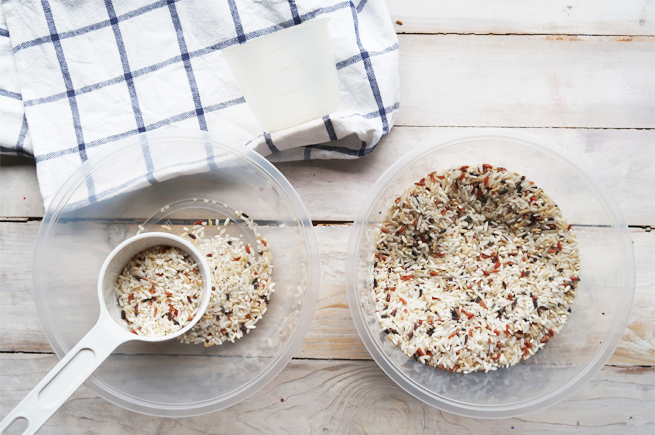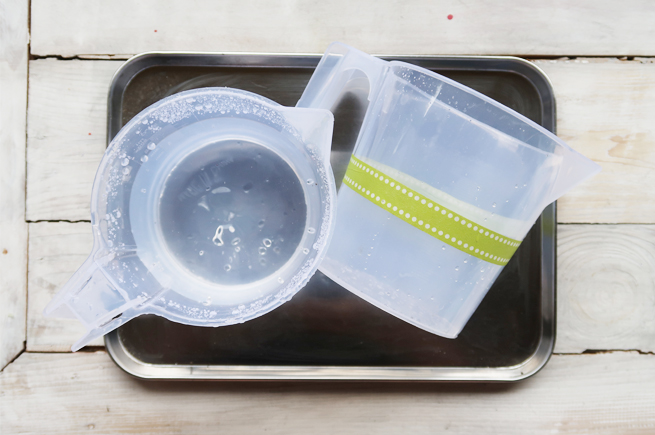One of the first things people often notice about children who are from Montessori homes/schools is that generally, they are very comfortable in the kitchen. They do all sorts of things including actual baking and cooking at such a young age (young here being younger than the typical). In the Montessori community, this is definitely not about having a competition on who did it younger, but really a matter of respecting the child’s capability to do actual, purposeful work.
I myself have so much fun watching children work in the kitchen. It is, for me, one of the most organic ways we can introduce purpose to their need for movement. Your child likes transfer work? There are lots you can do during your cooking prep. Your child is into squeezing? Perfect! Make some juice.
Children are very capable of learning how to use a knife safely, and yes, cooking an actual meal. However, these are things that are not done overnight. It’s a product of a series of small steps and lots of practice with adult supervision. I know how these areas can be a source of major worry for many parents – the thought of dealing with burnt skin or bleeding fingers is not fun, after all.
The good news is…there are A LOT of activities you can do with your child while in the kitchen without chopping or cooking! If you’re not comfortable introducing knives or letting your toddler deal with the stove yet, that is totally fine. You can start with other things that are way easier, yet just as purposeful and engaging for your child.
Here are some of the things we do with our toddler at home. Feel free to also share yours!:)
But before that….just an important note: Some of the links mentioned here are now under my affiliate account. This means that when you purchase the product/s using the links from my blog, I will earn credits or commission from my partner store at no extra cost to you. This is so helpful in keeping this blog alive, so if you found out about these products through me, hope you could help by purchasing from my affiliate link/s. Thank you!]
TRANSFER WORK
The moment you notice your child putting things from one place to another (like placing some things in the trash can), you can introduce hand transfer work. You can start with solids, like placing eggs in an egg container, or a basket. One of my favorite (just to be clear, MINE, not my son’s) Montessori infant materials is the wooden cup and egg, when the infant first tries to figure out and learn how to fit an egg into a container. Egg transfer work in the kitchen is a great extension for this work. Of course, it doesn’t only apply to eggs, but to anything you have to transfer — groceries to the fridge from the grocery bag, fruits to the blender, vegetables to a bowl, etc.
Scooping Work – This is another kind of transfer work, wherein your toddler uses tools to transfer. You may begin with solids, such as transferring rice to the rice cooker using a measuring cup, or mung beans/ cornstarch to a bowl, etc. The options here are practically endless!
Once your infant/ toddler is already comfortable with transferring solids, you can also introduce transferring liquids. You may start with containers that are large enough for liquids to easily fit without much spills (but of course, prepare for spills – they are essential in the process of learning). Once your child can do it with ease, you can add a control of error. Say, you need 1/2 cup, you can put a washi tape (can easily be removed later on) on where your child should stop since s/he cannot count and read numbers at this stage yet. Then you can move on to smaller containers, or measuring cups.
This can be practiced daily, too, through a glass and a small pitcher (in our case, we just use a small juice bottle like THIS ONE, but you can also use small pitchers like THIS, or THIS, or THIS ONE for beginners). We leave a pair in the fridge so our toddler can get water anytime he likes.
POUNDING WORK
My son is currently in that stage where he likes testing materials (like sticks) by increasing the strength of his taps. He usually starts very gently, and then it gets faster and louder. It was because of this stage that I thought of introducing pounding work to him, and oh how he loves it! I cannot afford to keep on making him pound garlic (that really comes out quite costly), but I did realize I could make him pound something that is not only easier for starters, but also something we have excess of — egg shells! After he cracks eggs (this is another work you can have your toddler do, though it is quite messy, so I wouldn’t recommend it for those who are just really starting in the kitchen), we cook the eggs. When we’re done, I invite him to pound the egg shells. Do we throw it after? Definitely not! Eggshells are great fertilizers! They contain calcium, phosphorus, sulfur, and potassium, which help make the plants grow healthier! Once we are done pounding, the eggshells go straight to the soil of our plants. PS: For beginners, I recommend using a wooden set of mortar and pestle — the marble ones are too heavy and could really pose dangers for those who are just learning.
CUTTING WORK (USING COOKIE CUTTERS)
We don’t do this so much in the kitchen since we don’t bake a lot nor do bento meals, but my son loves this activity with clay! All you need is a cookie cutter (basic shapes will do since they are drawn to learning shapes in the environment) and bread, or dough, or batter and you’re good to go! I find the cookie cutters with handle easier to use for toddlers. I found something similar to ours HERE.
CUTTING VEGETABLES (USING BARE HANDS)
Another way you can cut without using knives is to use your bare hands! This is possible with some kinds of vegetables, such as sitaw (string beans), which we always have at home. A plus here is you can also take out the seeds!
Another way your toddler can use his/her bare hands is through this – separating the grapes from its branches. You can also do the same for other fruits, like cherries from its stem, or vegetables like malunggay (moringa) leaves from its branches.
DRYING WORK
If you eat salad at home, salad spinners are a must in taking the water out of your leafy greens! It’s helpful in taking out water from mushrooms, too! It’s very easy to use, yet challenging enough for toddlers, which I think is why my son loves doing this. Plus, all that circular motion your toddler will do is an indirect preparation for future writing and drawing! How cool is that? We are using THIS ONE.
You can also do manual drying work HERE with your toddler. are some ways you can dry herbs.
SQUEEZING WORK
My son introduced me to the idea of using our calamansi fruits for squeezing. You see, when you look up squeezing work in the Montessori community or books, you would usually find squeezing sponges whether by hand or using a garlic press as the usual recommendations. Another would be squeezing lemons or oranges using a manual juice squeezer like THIS ONE. I put a sponge in our bathroom, and our son wasn’t using it like I hoped (he does now in our sink). I have not tried a garlic press yet, and the manual juice squeezer is still a bit challenging for him, but thankfully, he showed me his own squeezing work — by squeezing all our calamansi fruits in the table everytime we had them on our table! Calamansi (Calamondin) is also a citrus fruit, but unlike lemons, limes, and oranges, it’s very tiny — perfect for my toddler’s little hands!
Once he really got used to squeezing calamansi, I introduced juicing to him, so sometimes, I would catch him squeezing calamansi directly in his water and drinking it. If you’re using larger citrus fruits, you can also introduce PEELING work! My toddler absolutely loves doing this with dalandan, lemons, and oranges.
For juicing, while direct transfer to a glass works, it’s still better to use a colander/ strainer, because it has a lot of seeds. We use THIS SET.
Another kind of squeezing work is by using tongs. You can use this during food preparation (like separating the pickles from the liquid), or even on the dining table itself. I like using the really small ones from Daiso (I think THIS SET could be a good alternative) best for the small pieces of food we have on the table, like diced tofu, or diced cheese.
WASHING
One of the easiest, yet probably also one of the messiest at first — washing work!
In this work, all your toddler needs to do is to place the vegetables and fruits in a bowl to wash it before cooking/ eating. If your produce are not organic, there are a lot of ways to reduce the toxins. You can use a readymade vegetable/fruit wash (we do this when we are short on time since it only requires around 30 seconds to a minute of soaking before rinsing), or sprinkle baking soda and soak it a little longer. We usually leave it for at least 15 minutes before rinsing.

Of course, washing dishes is also part of kitchen work, too! In the Philippines, I don’t know anybody who uses a dishwasher. Manual dishwashing is still very much practiced here, and since I like doing that a lot, one day, my toddler just started wanting to wash dishes.
Of course, we have to remember that in all these activities I shared, for the toddler, it’s more about the process than the result.
I think it is very helpful to remember that so we, as adults, can manage our expectations (part of our being prepared adults)!
So, while for sure there would be progress, nothing here would be an overnight perfection.
Expect lots of messes, lots of repetition (we had to eat omelettes for lunch earlier due to the number of eggs our toddler cracked), lots of food on the floor (hence, I’ve learned to put a tray under my toddler’s kitchen tower/stool so we still get to save the produce), lots of imperfect moments…but also, expect lots of organic opportunities for purposeful work, improvement on focus and concentration, indirect preparation for writing and drawing, challenging but satisfying moments for your toddler, and if you choose to see it in a positive way, lots and lots and lots of fun!
Hope this post was helpful! Have fun in the kitchen!















